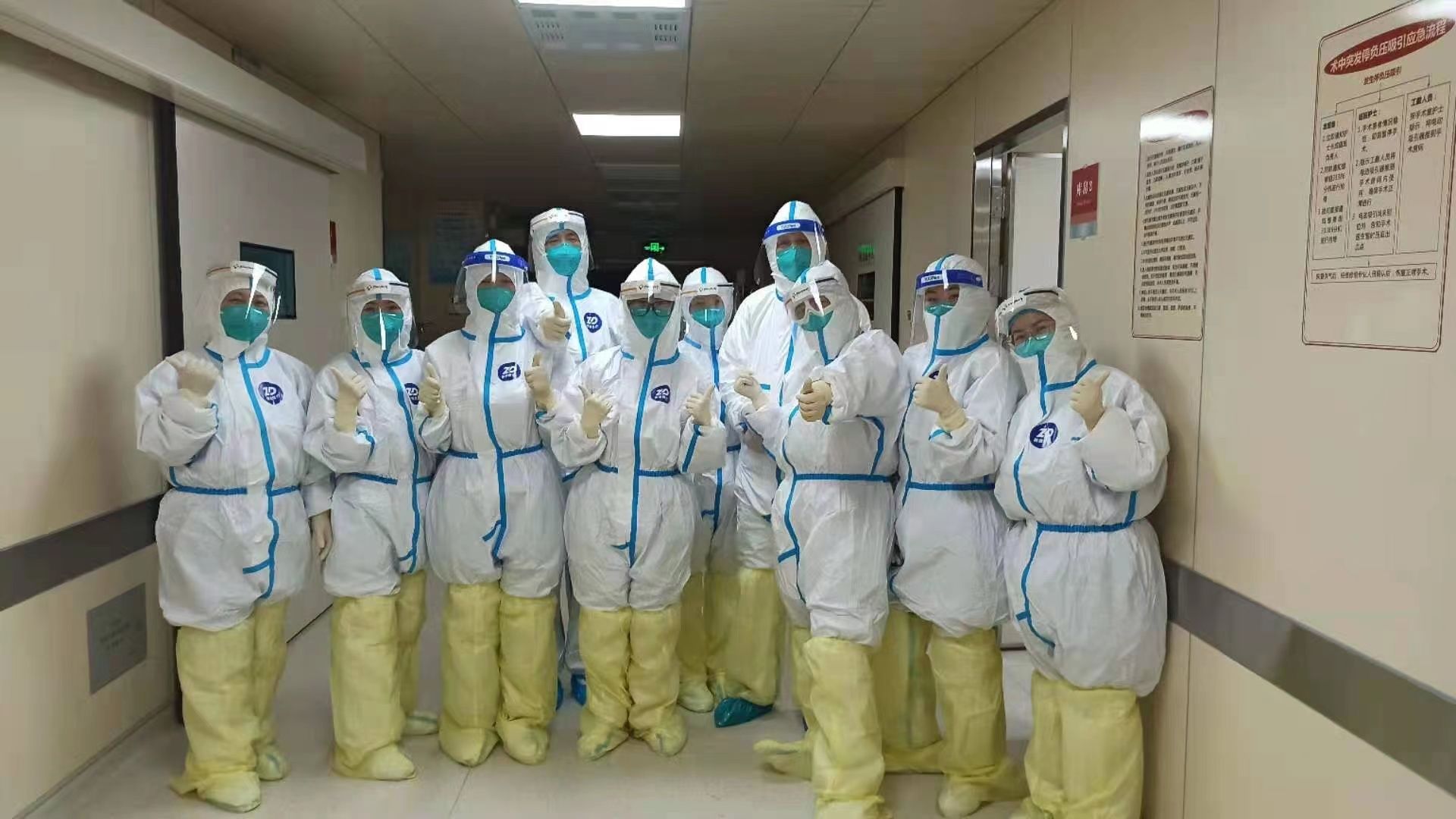
Under the prevention and control of the epidemic, doctors in Shanghai have not stopped exploring the treatment of difficult technologies and difficult cases.
“The patient was able to eat this morning and was breathing smoothly.” On the morning of April 5, Zhao Xiaojing, director of the Department of Thoracic Surgery, Renji Hospital Affiliated to Shanghai Jiaotong University School of Medicine, was on rounds. I am delighted that one day ago, the thoracic surgery team he led and the Department of Anesthesiology collaborated to complete the first thoracoscopic tracheal tumor surgery in this hospital that preserves spontaneous breathing without tracheal intubation. Such cases and surgical techniques are still rare in the country.
Help! The patient came to Shanghai because of the famous name
Ms. Shen, 45, suffered from a tracheal tumor. The pathological diagnosis of tracheal malignant tumor was confirmed by a foreign hospital. Recently, part of the tumor has been palliatively removed under the bronchoscope in the local hospital, and Ms. Shen, who has temporarily relieved her shortness of breath, is worried. After the introduction, Ms. Shen found the team of Zhao Xiaojing from the Department of Thoracic Surgery of Renji Hospital, and rushed to Shanghai from her hometown of Fujian.
Director Zhao Xiaojing said that traditional thoracotomy to remove tumors is relatively safe, but the postoperative recovery period is long and the patient feels more pain.
“The patient himself is also a doctor, and I hope to return to work as soon as possible after the operation. Under the premise of fully considering the safety of the patient’s life, we decided to use non-tracheal intubation to preserve spontaneous breathing (Tubeless technology) thoracoscopy Tracheal tumor surgery, tumor removal.” Zhao Xiaojing said.
“tightrope walking on a cliff” surgery
Non-intubation-preserving spontaneous breathing thoracoscopic tracheal tumor surgery, Known as the “jewel in the crown” in the field of thoracic surgery. Spontaneously breathing thoracoscopic surgery puts forward higher technical requirements for both surgeons and anesthesiologists, and requires tacit cooperation – the surgeon performs precise operations, quickly removes the lesion, sutures the wound, and the anesthesiologist ensures that the patient is adequately supplied with oxygen during the operation.
“It’s like walking a tightrope on a cliff.” Zhao Xiaojing described the operation.
Before the operation, the Department of Thoracic Surgery and Anesthesiology of Renji Hospital spent a day and a half designing the operation plan and preparing multiple plans. “Looking at the whole country, the relevant cases and surgical experience are very limited, but what we need to do is to design a set of safe and feasible plans from the limited experience that minimize the suffering of patients.”
Multiple With the concerted efforts of the departments, the plan was released, and everything was ready, just waiting for the operation.
On the afternoon of April 4, Renji Hospital’s first thoracoscopic tracheal tumor surgery without tracheal intubation to preserve spontaneous breathing was started. Wearing isolation protective clothing, the Department of Thoracic Surgery and the Department of Anesthesiology worked together, and everyone held a belief: only success, not failure!
This is the first thoracoscopic tracheal tumor surgery performed by Renji Hospital without tracheal intubation. The operation was completed by two experts, Zhao Xiaojing and Pan Wenbiao, assisted by Dr. Lin Haiping and Wang Yanlei; three physicians, Pan Zhiying, Liu Yaling, and Zhu Huichen from the Department of Anesthesiology, were responsible for the anesthesia.

The operation took more than 2 hours and was successfully completed.
“The wound after the operation is very small, only 3 cm. The patient can not only recover as soon as possible, but also reduce the pain, and can return to normal work and life as soon as possible.” Zhao Xiaojing said that the whole operation does not require endotracheal intubation and Muscle relaxants, with a small amount of intravenous anesthetics, allow patients to fully sedate and relieve pain while breathing spontaneously throughout the operation, and at the same time greatly reduce postoperative throat and chest discomfort, speeds up postoperative recovery, shortens hospitalization time, and reduces Hospitalization costs to achieve the goal of “whole minimally invasive” thoracic surgery.
The Department of Thoracic Surgery of Renji Hospital is one of the earliest esophagus and lung surgery bases in China. At present, the department has completed more than 2,000 operations and is proficient in carrying out various types of thoracoscopy, single-port thoracoscopy, and machine-assisted thoracoscopy. In addition, it has standardized diagnosis and treatment standards in the treatment of thoracic tumors. The positive detection rate of early lung cancer, the comprehensive treatment of advanced lung cancer, and the clinical application of thoracoscopy are all in the leading position at home and abroad. Has a high reputation.
Author: Tang Wenjia < span>Huang Xing
Editor: Tang Wenjia
Responsible Editor: Fan Liping
*Wenhui’s exclusive manuscript, please indicate the source when reprinting.